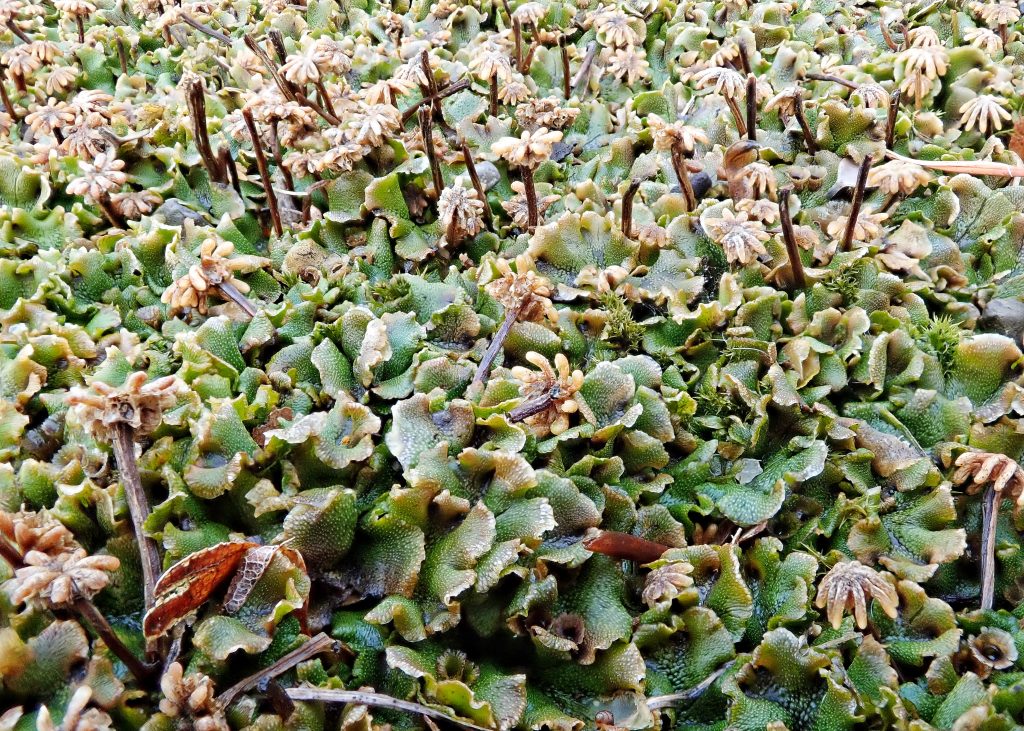
I had other things that I intended to accomplish yesterday, but I thought I’d whip out a quick profile of Marchantia latifolia, since there are many patches of it in some landscape plantings just down the street from our apartment. But, of course and as usual, things were not as simple as I’d thought they’d be.
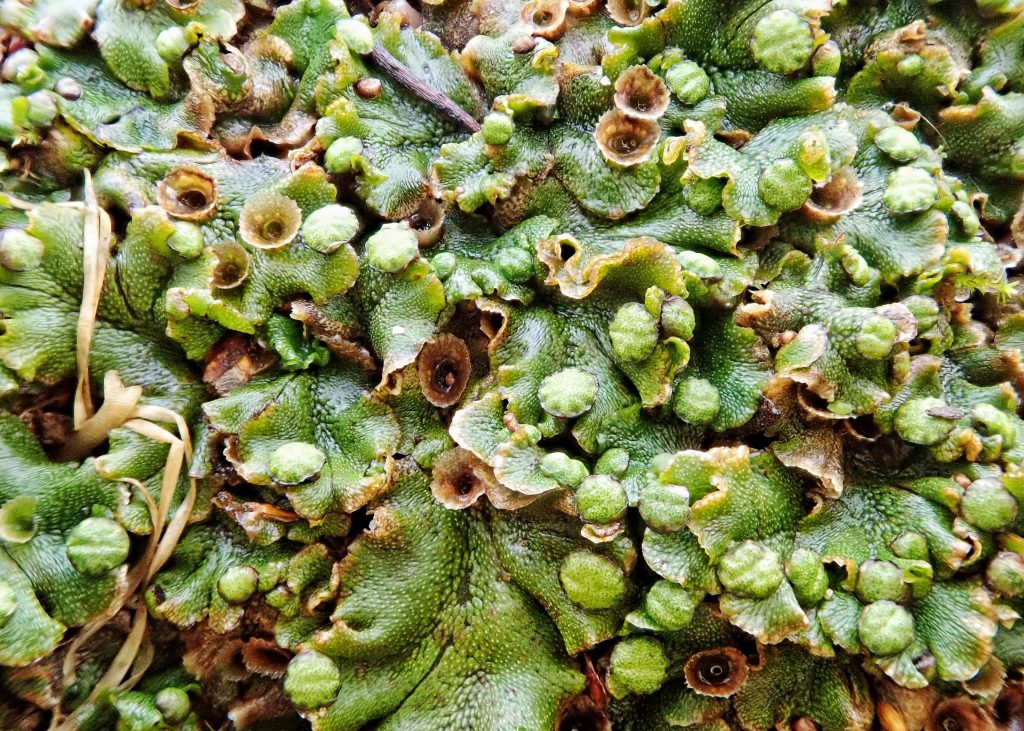
One aspect of that lack of simplicity, albeit one with which I was already familiar, is that whereas there was, until the late 20th century, thought to be only one species of Marchantia in our region, there are now considered to be three. This is due to nomenclatural, as well as molecular/morphological reasons. It should be noted that there is not universal acceptance of these taxonomical changes.
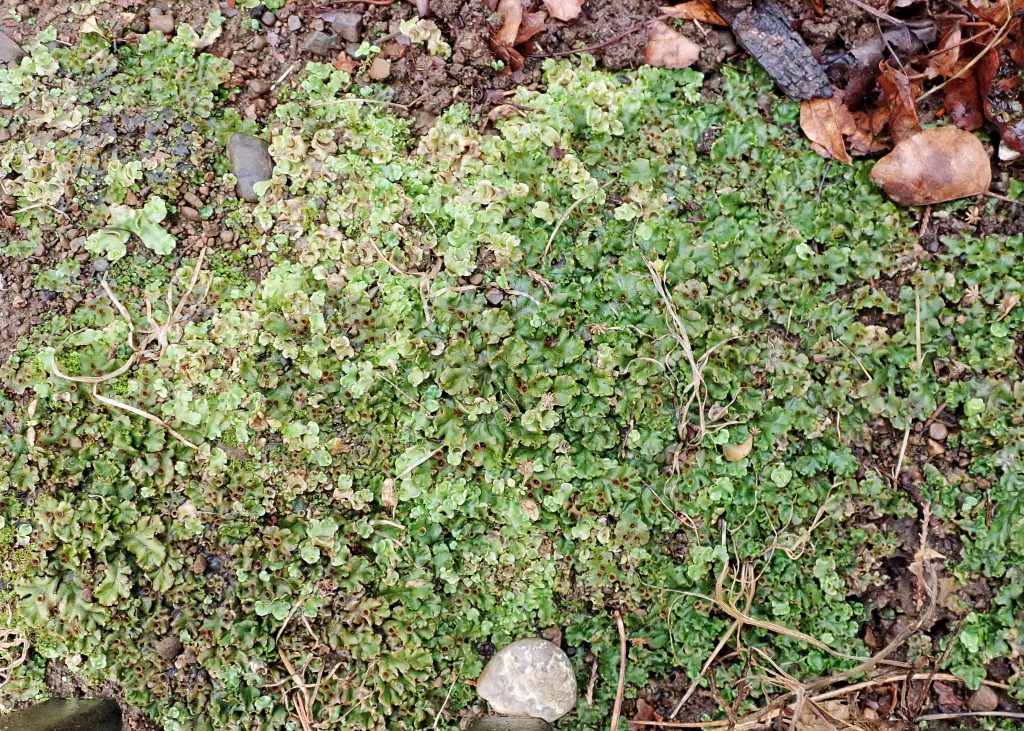
In 2002 Kell Damsholt published a work (Illustrated Flora of Nordic Liverworts and Hornworts) that showed that the type specimen for M. polymorpha was actually M. aquatica! That meant that, because of the Principle of Priority, all things previously labeled as M. aquatica became M. polymorpha, and everything which proved not to be M. aquatica, but had previously been labeled as M. polymorpha, were named Marchantia latifolia, since that was the oldest synonym.
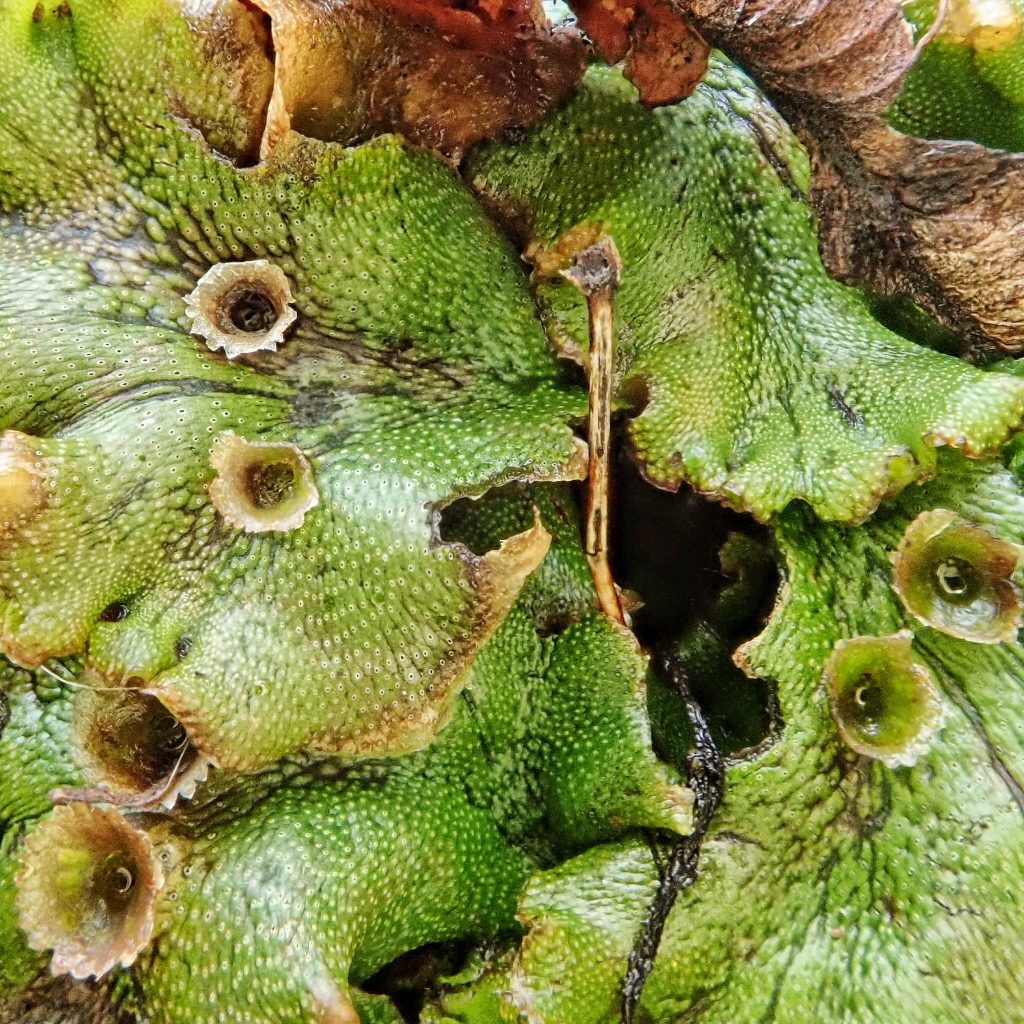
And, just to add to the confusion, what had previously been called M. p. ssp. alpinum was raised to full species status and christened Marchantia alpestris, which all adds up to their now being 3 species of Marchantia in our region. It’s all very confusing, but they are valid and necessary changes for the accuracy and standardization of our classification system.
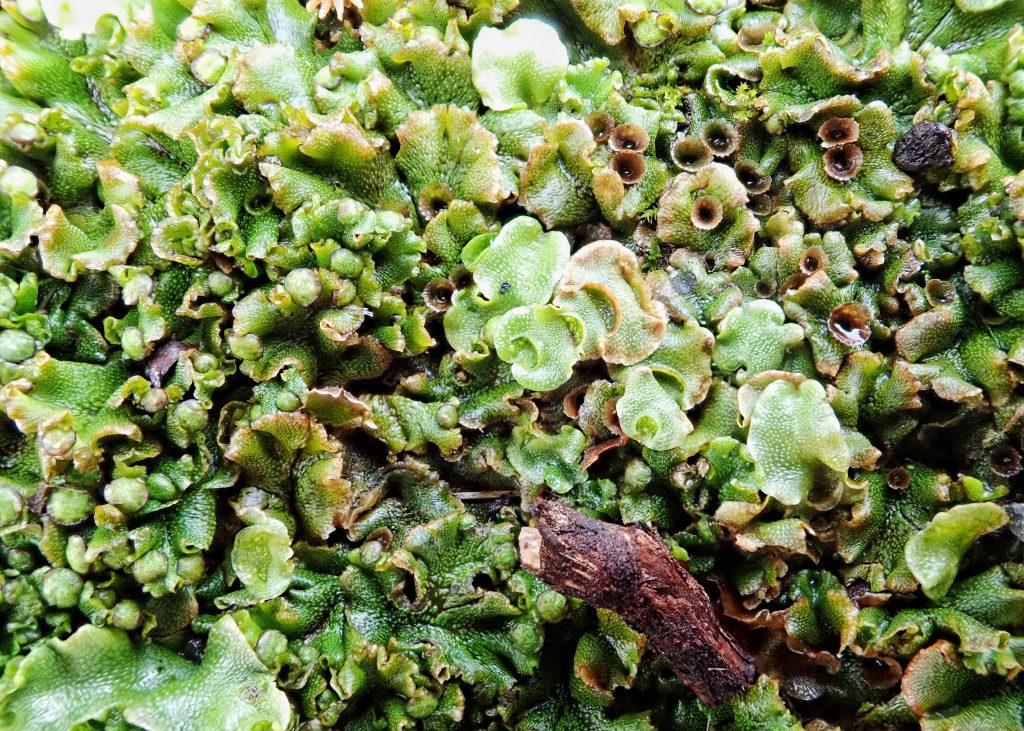
David Wagner informed me of all this a couple of years ago when I found and misidentified my first Marchantia. Due to the fact that of the three only Marchantia latifolia is known to be a common urban weed, and the partial dark thallus stripe is fairly obvious, I didn’t make the effort to do a thorough identification, and ever since I have called all of the Marchantia I commonly encounter around town M. latifolia.
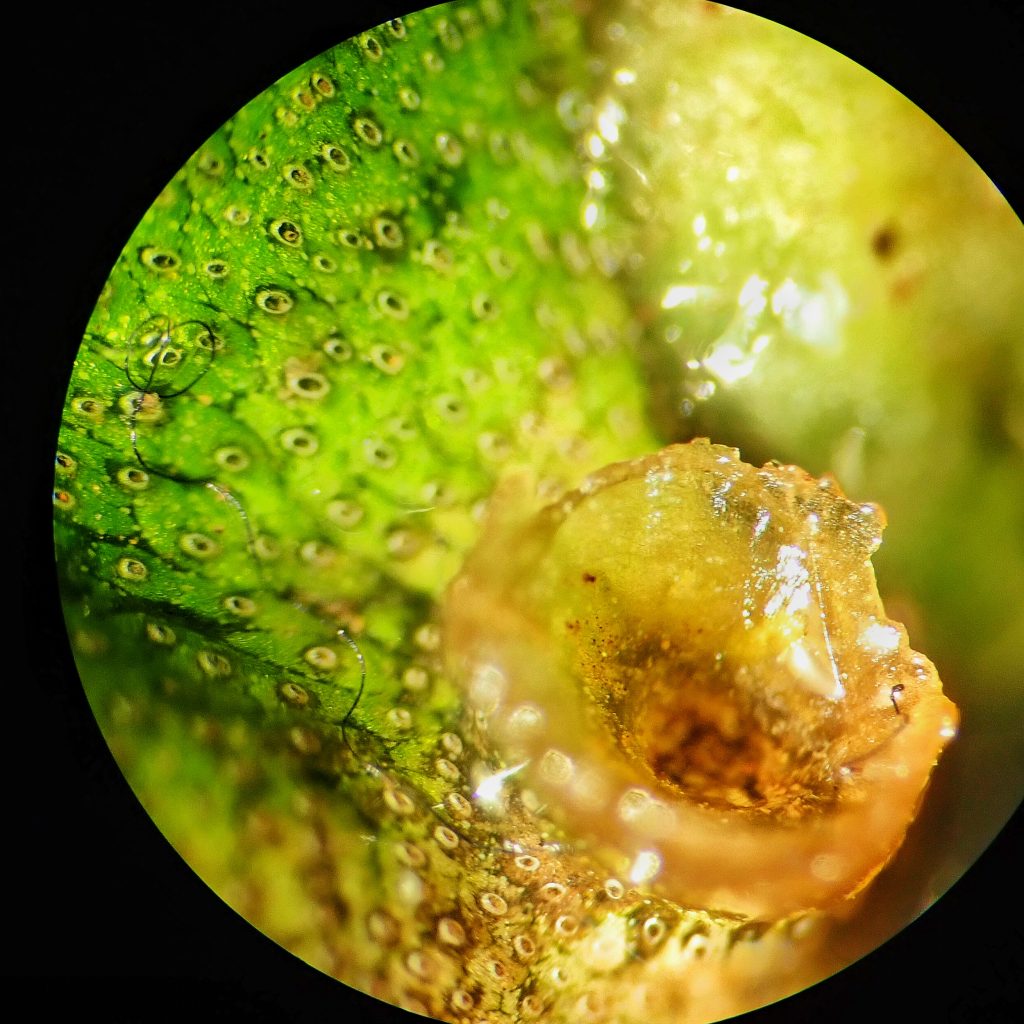
I returned home with a camera full of images and a small container of specimens, and blithely set about writing this profile. But there is a dearth of information regarding M. latifolia because the change is relatively recent, and nobody has re-categorized all of the M. polymorpha information. So I turned to David Wagner’s full treatment of Oregon liverworts (the key to genera of liverworts is online and can be accessed here; the species information is on a thumb drive which may be purchased from David), where I was reminded about the taxonomic importance of the scale appendages. And because I not only want these profiles to be accurate, but want them to show proof of accuracy if possible, I set about trying to find and photograph the scale appendages. And there went my day.
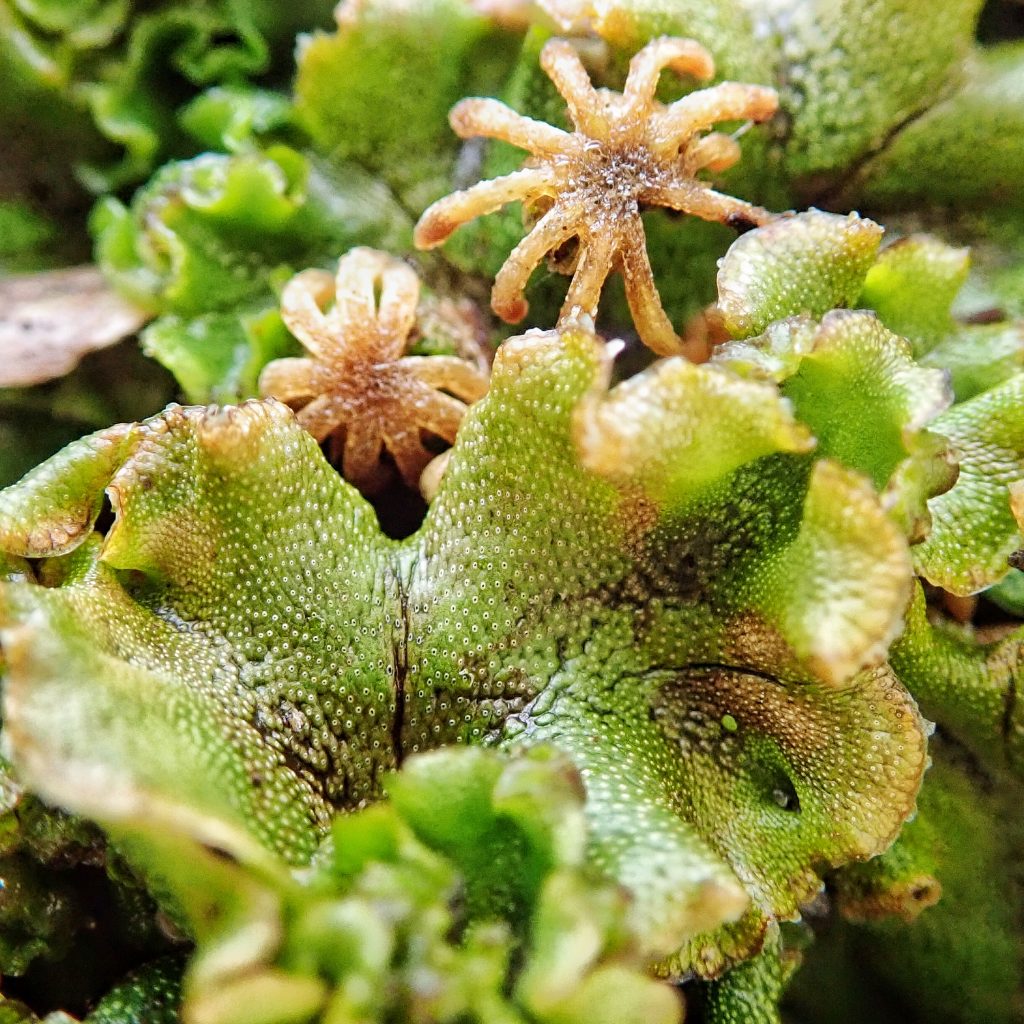
Due to a lazy and inaccurate reading of the key, within an hour I had found and photographed a characteristic which was highly ambiguous, and sent an email to David about it. He replied that that wasn’t a salient trait, and told me where to look for the scale appendage.
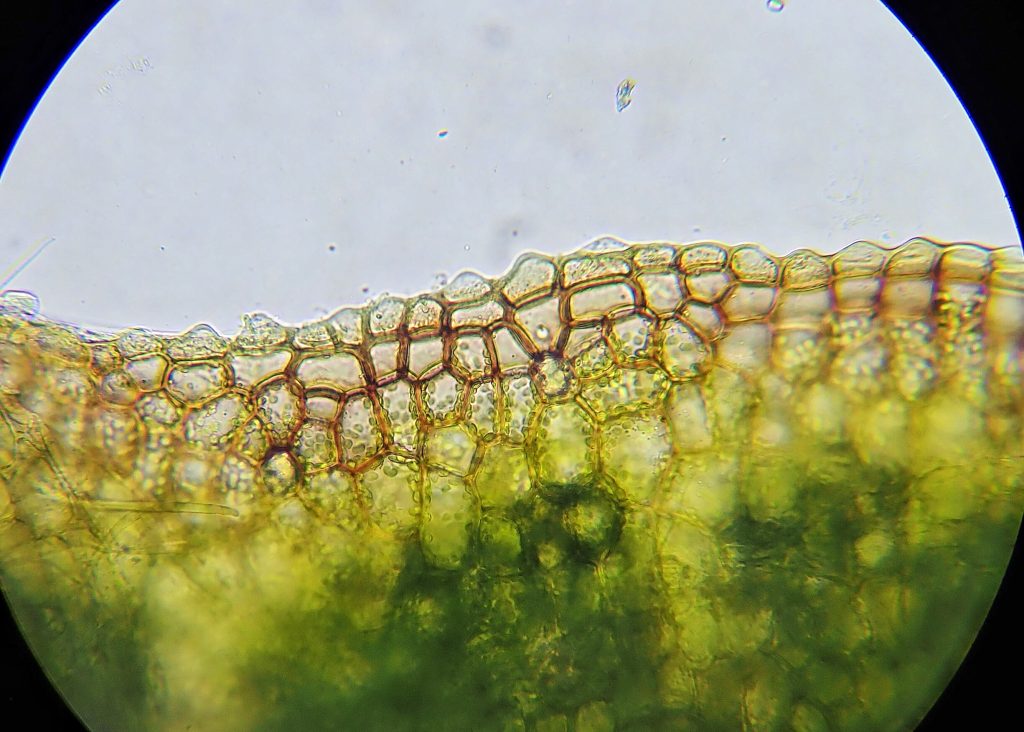
It turns out that these scales are appressed to the ventral side of the thallus, and the appendage wraps around the base of the apical notch onto the dorsal side. Their purpose is to protect, and prevent the desiccation of, the generative tissue that is formed in these notches. But they are very delicate (being only one cell thick), tightly adhered to the surface, and nearly invisible even under magnification.
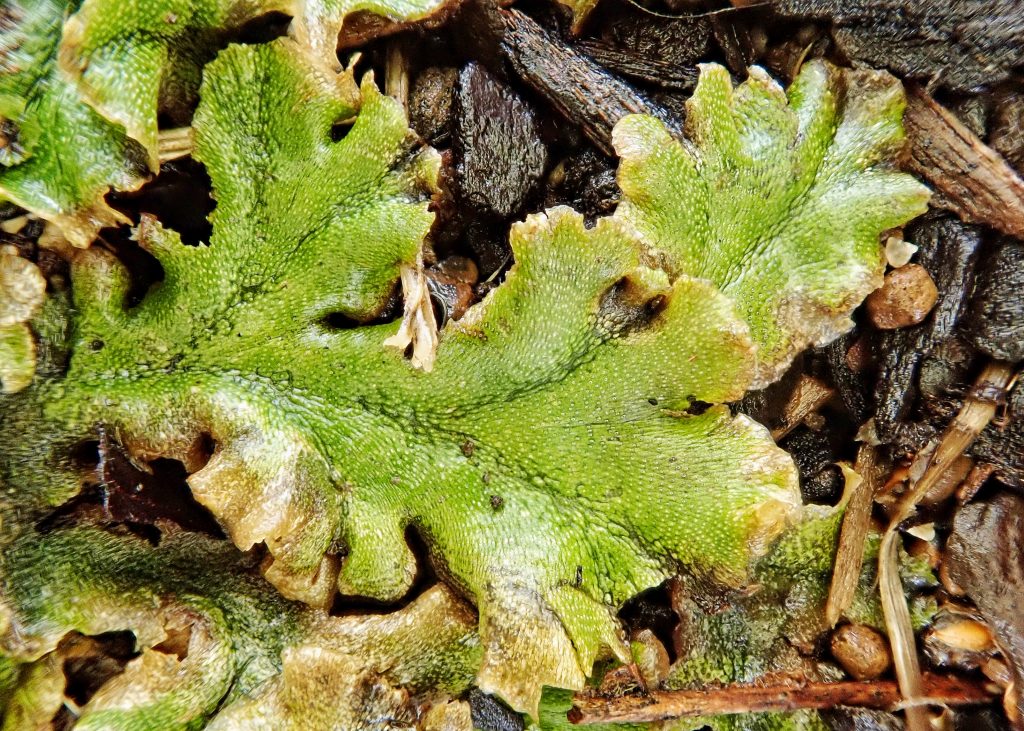
I spent hours trying to excise one of these appendages. Eventually I ended up with something that looked like it might be part of one, and I emailed a photo of it to David, more out of desperation and frustration than any real belief it was correct. Which it wasn’t, as he informed me, but he also told me that what I was looking for was probably in that clump, and I should tease it apart in a drop of water. Since I had already tried to do that I had no confidence I’d succeed the next time, and sure enough I ended up mangling the whole 250 micron clump. As I’ve said before, clumsy and indelicate meat hooks.
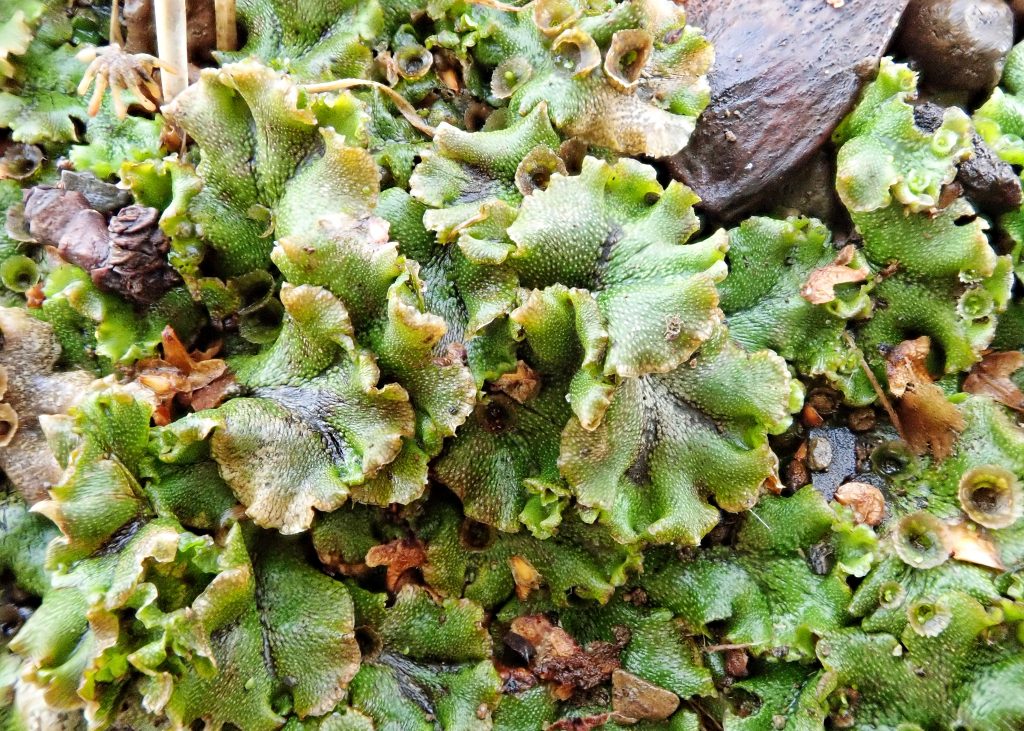
However, in the meantime I had spoken to my buddy Craig Sondergaard, and expressed my belief that I lacked the fine motor skills to be capable of accomplishing this task. And, lab rat that he is, he suggested cleaning a specimen with a potassium hydroxide solution (lye, and the same stuff we had recently purchased to do K spot tests on lichens) to see if it would dissolve whatever ‘glued’ the appendage to the surface.
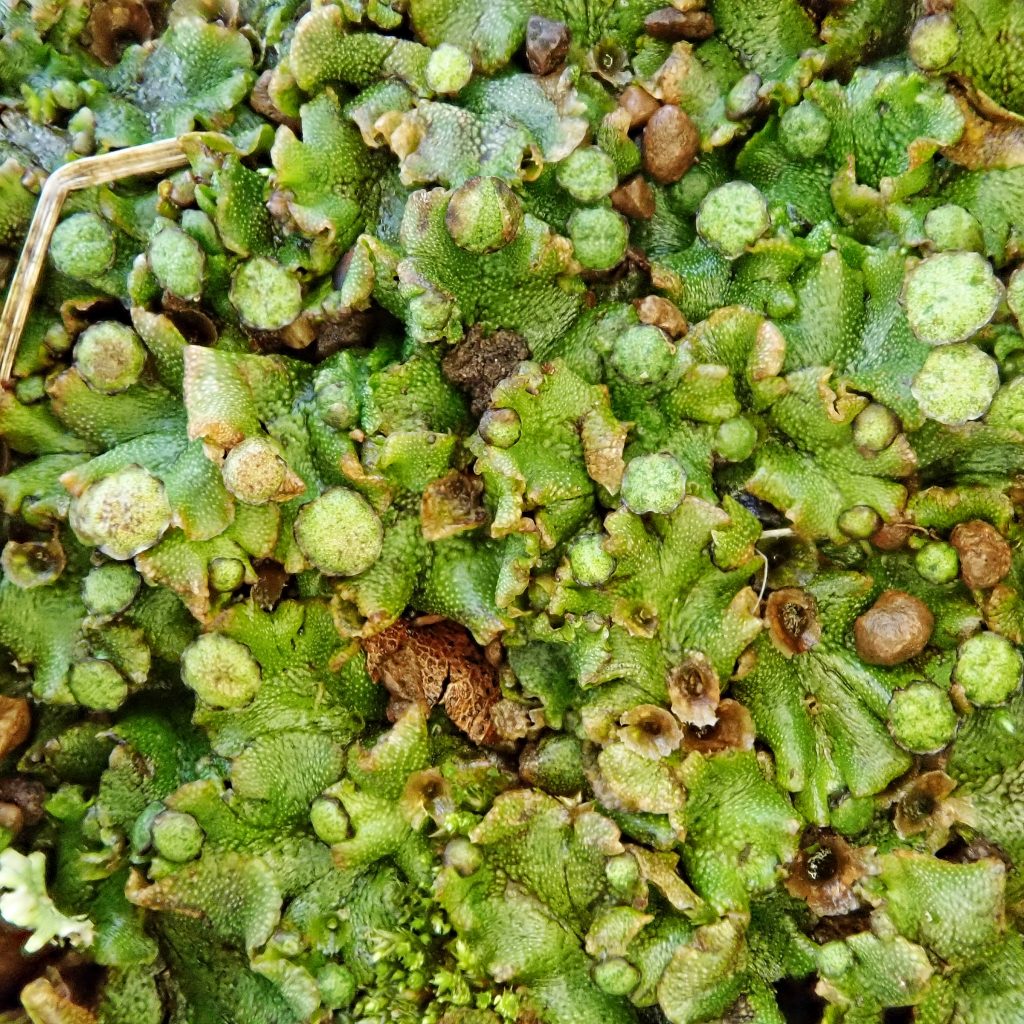
And it worked fantastically! After butchering my former specimen I grabbed another thallus with my microforceps, swished it back and forth in some K and rinsed it in some water, and put it under the ‘scope. Where I could plainly see the appendage peeling back in the notch. I managed just enough delicacy to remove it without destroying it, got it on a slide, and !Voila!, I had proof that this was, indeed, Marchantia latifolia. Of course, by then it was almost 10pm, and all other responsibilities had been blown off. But still I was happy as a moss in rain, and very grateful to Craig and David for their knowledge, and willingness to share it with me.
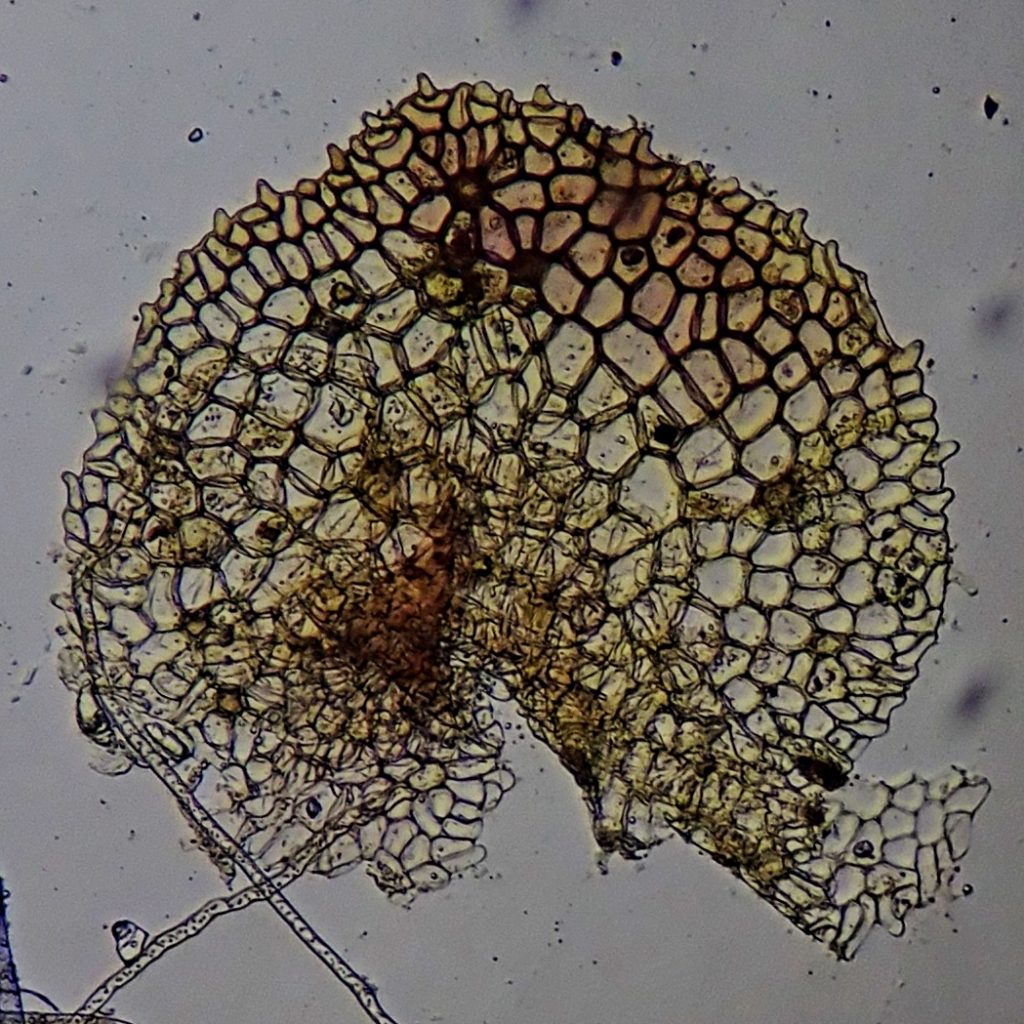
Description-Olive to dark green thallose liverwort with a diffuse dark stripe extending through 3/4 of the thallus; often forms large mats; gemma cups circular and abundant; dioicous, with female plants forming stalked, asterisk shaped archegonia, and males with round, lobed antheridia; scale appendages moderately toothed; tends to have smaller thalli than other Marchantia sp. , though they can be up to 15mm wide.
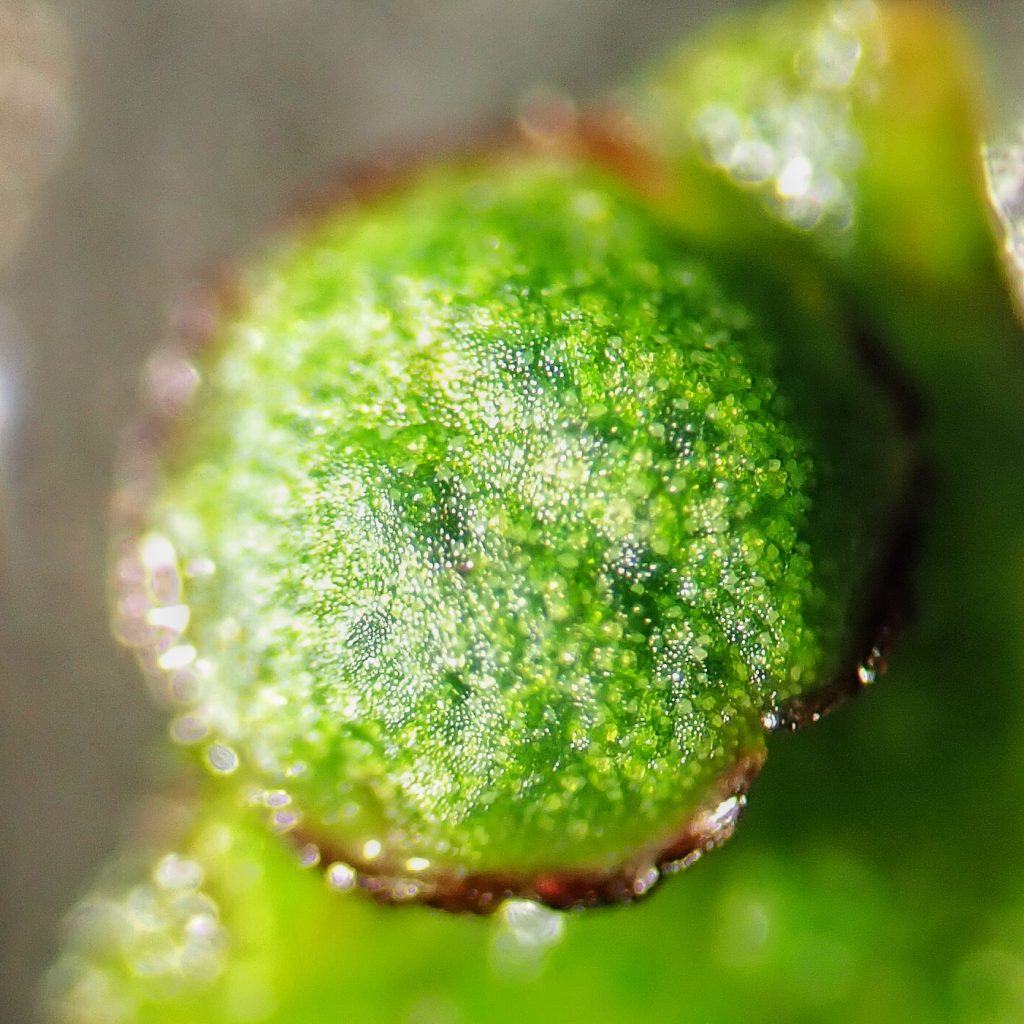
Similar species–Lunularia cruciata has crescent shaped gemma cups; Marchantia polymorpha is seldom found in urban environments, has dark thallus stripe extending to apex, and scale appendage untoothed; M. alpestris is found at high elevations, doesn’t have a dark thallus stripe, and has densely, jaggedly toothed scale appendages.
Habitat– On moist soil at all elevations, often in disturbed ground in urban settings, frequently on mineral soil.
Range-Region wide in appropriate habitat.
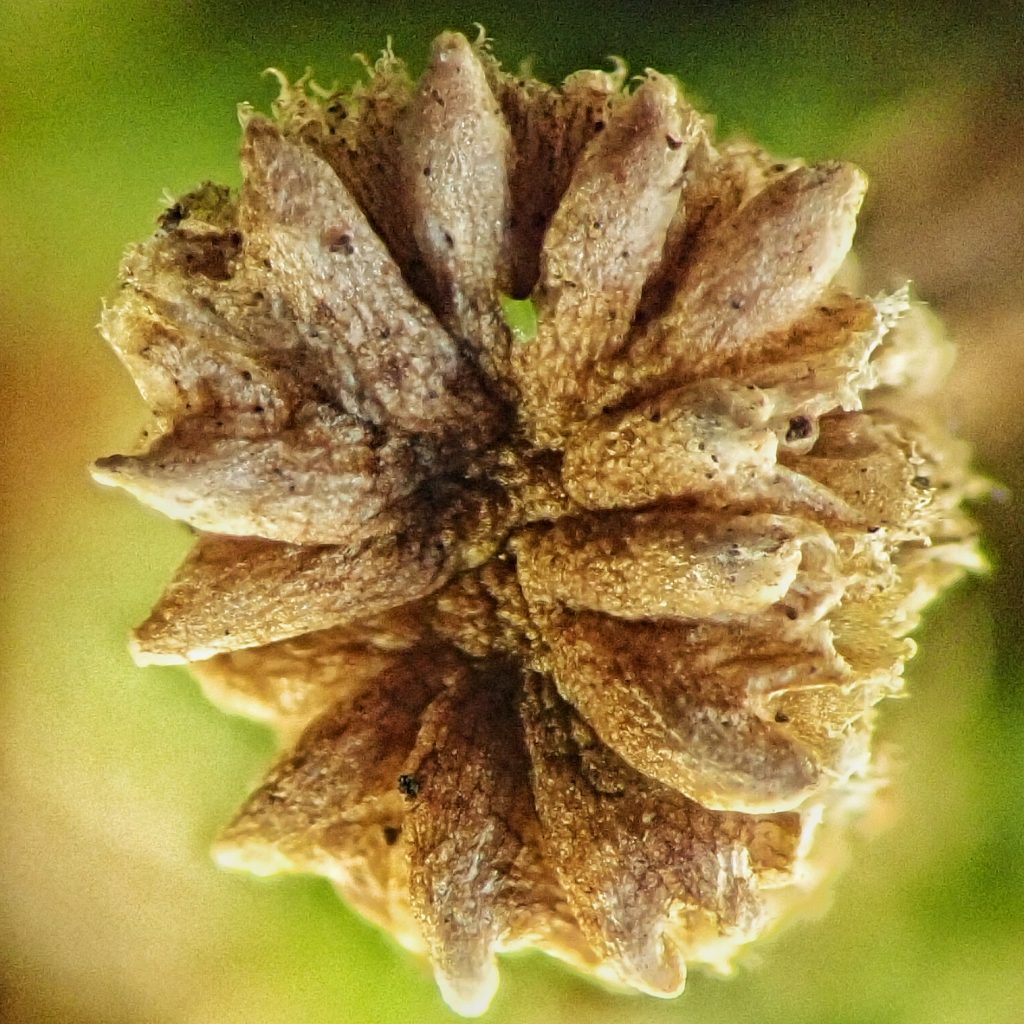
Reproductive timing– Late winter into spring
Etymology of names– The name Marchantia honors Nicholas Marchant (c. 1585-1678), a French botanist and director of Jardin du Roi, a famous and influential botanical garden in Paris. This honor was bestowed on him by his son, Jean Marchant, who proved that these liverworts were not lichens by finding and identifying their archegonia and antheridia, and named the genus after his father. The specific epithet latifolia is Latin for ‘broad-leaved’, referring to the appearance of the thalli.
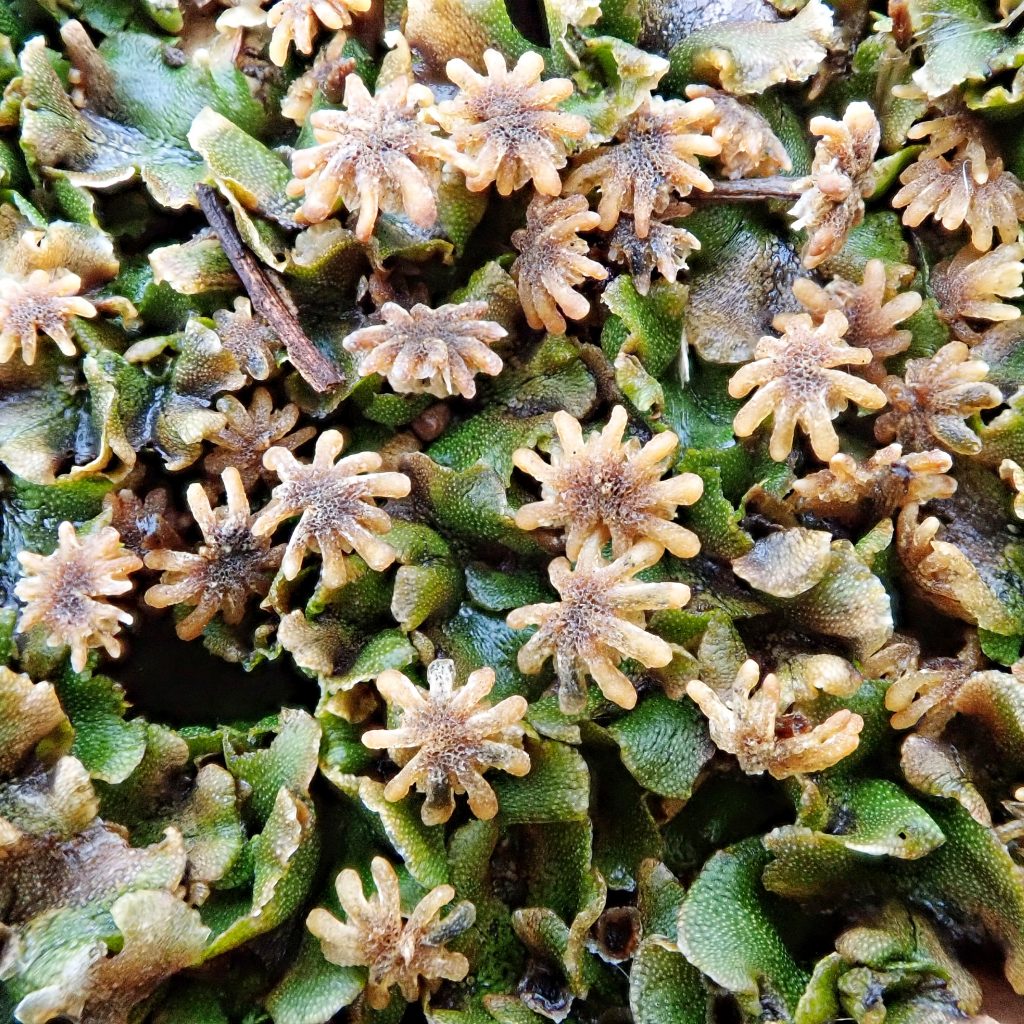
Key to Genera of Oregon Liverworts
https://www.gbif.org/species/168572505
https://www.illinoiswildflowers.info/mosses/plants/umb_liverwort.html
https://en.m.wikipedia.org/wiki/Marchantia
https://www.fs.fed.us/wildflowers/plant-of-the-week/marchantia_polymorpha.shtml
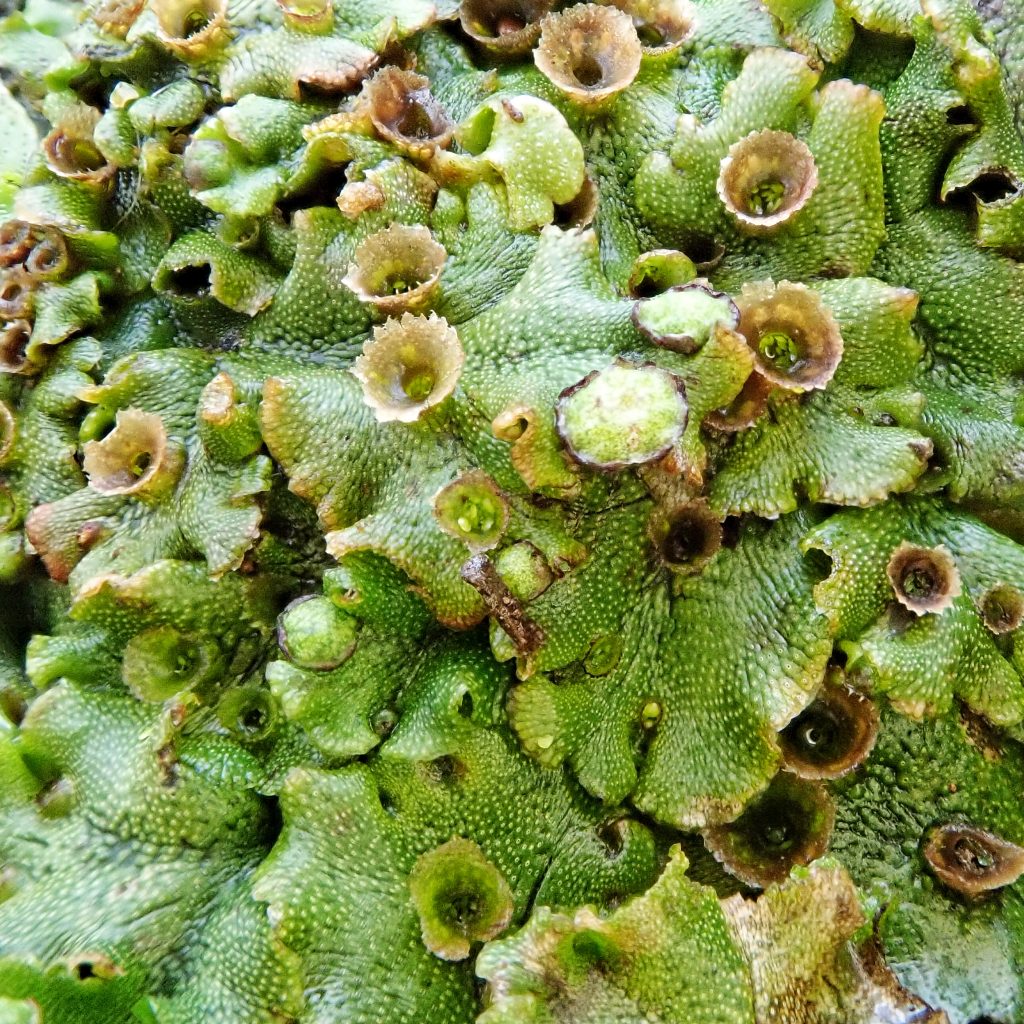
Microsurgery needed – wow!